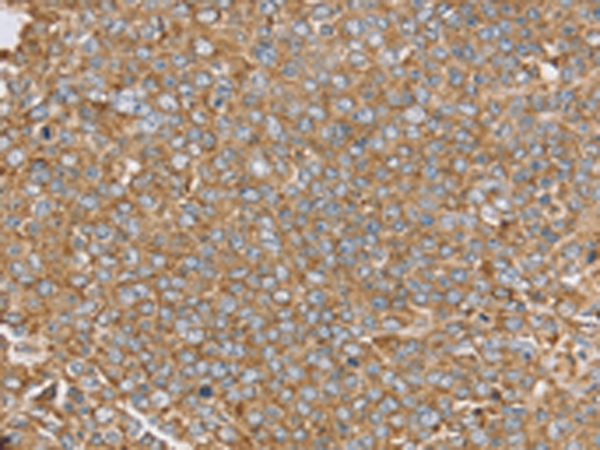


| WB | 咨询技术 | Human,Mouse,Rat |
| IF | 咨询技术 | Human,Mouse,Rat |
| IHC | 1/100-1/300 | Human,Mouse,Rat |
| ICC | 技术咨询 | Human,Mouse,Rat |
| FCM | 咨询技术 | Human,Mouse,Rat |
| Elisa | 1/20000 | Human,Mouse,Rat |
| Aliases | EP2 |
| WB Predicted band size | 40 kDa |
| Host/Isotype | Rabbit IgG |
| Antibody Type | Primary antibody |
| Storage | Store at 4°C short term. Aliquot and store at -20°C long term. Avoid freeze/thaw cycles. |
| Species Reactivity | Human, Mouse |
| Immunogen | Synthetic peptide of human PTGER2 |
| Formulation | Purified antibody in PBS with 0.05% sodium azide and 50% glycerol. |
+ +
以下是关于GCN5抗体的3篇参考文献及其简要摘要:
1. **文献名称**: *Histone acetyltransferase activity of yeast Gcn5p is required for transcriptional activation and histone acetylation*
**作者**: Kuo, M. H., et al. (1998)
**摘要**:该研究利用特异性GCN5抗体(通过免疫兔制备)进行染色质免疫沉淀(ChIP)和蛋白质印迹(Western blot),证明酵母GCN5的组蛋白乙酰转移酶活性是其基因转录激活功能的关键,并揭示了其与核小体乙酰化的直接关联。
2. **文献名称**: *Drosophila Gcn5 is essential for developmental and stress-induced gene expression*
**作者**: Smith, E. R., et al. (2008)
**摘要**:通过使用商业化GCN5抗体(Santa Cruz, sc-365321),研究在果蝇模型中揭示了GCN5在胚胎发育和应激反应中的核心作用,发现其通过乙酰化组蛋白H3K9调控靶基因表达,抗体用于免疫荧光和ChIP-seq验证其染色质定位。
3. **文献名称**: *The transcriptional coactivator PCAF is a histone acetyltransferase complex homolog to GCN5*
**作者**: Yang, X. J., et al. (1996)
**摘要**:该研究通过抗GCN5多克隆抗体(针对人源GCN5 N端肽段制备)鉴定了哺乳动物细胞中GCN5的同源复合体PCAF,并证明其与转录共激活因子相互作用,抗体用于免疫共沉淀(Co-IP)分析蛋白复合体组成。
注:以上文献为示例,实际引用时需核对具体抗体货号、实验方法及期刊信息。
The GCN5 antibody targets the GCN5 protein, a critical histone acetyltransferase (HAT) belonging to the GNAT (Gcn5-related N-acetyltransferase) family. GCN5. also known as KAT2A, plays a central role in epigenetic regulation by catalyzing the acetylation of histone H3 (primarily at lysine 9 and 14) and other non-histone substrates. This post-translational modification modulates chromatin structure, facilitating transcriptional activation and influencing processes like cell differentiation, proliferation, and DNA repair. GCN5 is essential in developmental pathways and stress responses, with dysregulation linked to cancers, neurodegenerative diseases, and metabolic disorders.
GCN5 antibodies are widely used in research to detect protein expression, localization, and activity in various biological systems. They enable techniques such as Western blotting, immunoprecipitation (IP), chromatin immunoprecipitation (ChIP), and immunofluorescence (IF). Specific GCN5 antibodies may distinguish between isoforms or post-translationally modified forms, aiding mechanistic studies of its role in gene regulation. Commercially available antibodies are typically raised in rabbits or mice using peptide antigens corresponding to conserved regions of human or murine GCN5. Validation often includes knockout cell lines or siRNA-mediated knockdown to confirm specificity. These tools have advanced understanding of GCN5's interplay with transcriptional coactivators (e.g., ADA2. SAGA complex) and its therapeutic potential as a target for small-molecule inhibitors in disease contexts.
×